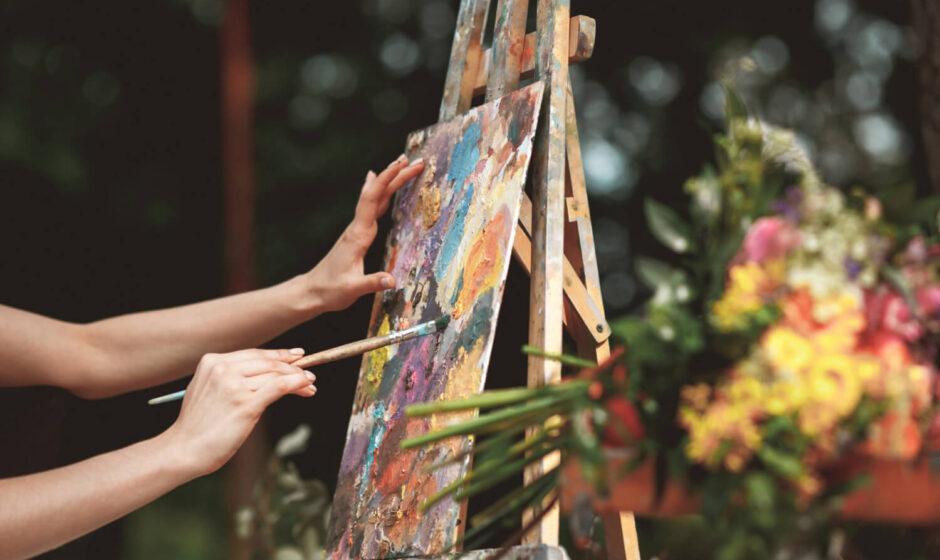Art has the extraordinary capacity to go beyond simple aesthetics; it can animate environments, arouse feelings, and start dialogues. This post explores the fascinating realm of art and how important it is to make spaces look beautiful. Examine the transformational power of art in producing aesthetically pleasing and culturally rich environments, from the emergence of public art installations to the changing trends in murals.
- The Language of Imagery: Deciphering the Meaning of Art:
Introduction
Dissecting the visual language that characterizes art and talking about the ways in which creative works speak to and affect people.
Forms of Artistic Expression
Take a look at a variety of artistic expressions, ranging from classic paintings and sculptures to more modern media including installations, digital art, and street art.
Cultural Significance
Talk about the cultural significance of art, acknowledging that it is a reflection of prevailing views, values, and historical narratives.
Emotional Impact
Draw attention to how art affects viewers emotionally, highlighting how it might cause them to smile, reflect, and feel connected.
- Public Art Installations: Converting Areas into Creative Canvases:
Introduction
Public art installations are becoming dynamic interventions that turn ordinary settings into colorful canvases of artistic expression.
Interactive Installations
Discover the allure of interactive public art installations, where spectators actively participate by interacting with and adding to the artwork.
Urban Revitalization
Talk about the role that public art plays in revitalizing neglected locations and promoting a feeling of pride and identity in local communities.
How Community Dynamics Are Affected:
Emphasize how public art improves social cohesion, shared ownership, and cultural identity within communities.
- Mural Trends: Murals as Dynamic Narratives, From Streets to Galleries
Introduction
The dynamic trends in murals explore the changing story of this expressive medium, from their origins in street art to their integration into galleries.
Street Art as Cultural Expression
The beginnings of murals in street art movements should be discussed, with an emphasis on their roots in self-expression, revolt, and cultural commentary.
Commission Mural and Collaboration
Examine the trend toward commissioned murals and collaborative projects, in which artists collaborate with organizations, corporations, and communities to produce site-specific and culturally appropriate artwork.
Integration into Galleries
Draw attention to the way mural art has been incorporated into conventional gallery settings, blurring the lines between fine art and street art and upending preconceived ideas about the proper placement of artwork.
- Celebrating Identity and Inclusivity via Cultural Diversity in Public Art
Introduction
This article explores how artists include features that reflect and honor multiple identities into their creations, with a focus on celebrating ethnic diversity in public art.
Representation Matters
Talk about the significance of representation in public art, emphasizing its ability to dispel myths, give voice to underrepresented groups, and promote a more welcoming cultural environment.
Heritage & Traditions in Public Art
Examine how public art honors heritage and customs by fusing stories, symbols, and themes that help people remember their origins.
Community-led Art Projects
Emphasize art initiatives that are led by the community and include locals in the creative process to ensure that the final product accurately reflects the goals and values of the area.
- The Influence of Art on Urban Aesthetics: Creating Beautiful Cityscapes
Introduction
Art’s transforming power on urban aesthetics, with a focus on how public art helps create visually appealing and culturally diverse cityscapes.
Beautification of Urban Spaces
Investigate how public art might be used to create environments that inspire and elevate both locals and tourists in urban areas, such as city centers and neighborhoods.
Tourism and Cultural Attractions
Talk about the significance that public art plays in drawing tourists and converting cities into cultural hotspots where people can see a wide range of artistic expressions.
Balancing Modernity and Tradition
Emphasize how urban aesthetics strike a careful balance between modernity and history, with public art acting as a link between historical details and cutting-edge originality.
- Using Art to Catalyze Social Change: Using Creativity to Address Issues:
Introduction
Art’s function as a social change agent, exploring how artists apply their imagination to tackle current societal problems and start important dialogues.
Activism Through Art
Examine how art can be a potent instrument for action, spreading ideas about social justice, environmental sustainability, and human rights.
Campaigns for awareness and street murals
Talk about the use of street murals as platforms for awareness campaigns, highlighting the ways in which artists work with groups to bring significant societal concerns to light.
The Effect on Conversation in Public
Draw attention to how art affects public conversation, highlighting how it can provoke thought, shift viewpoints, and motivate group action.
- Unexpected Places for Art: Art Outside of Streets and Galleries
Introduction
Unconventional settings and installations that transcend conventional artistic bounds are explored in this work, showcasing the beauty of art in unexpected places.
Art in Nature
Talk about how art can be incorporated into natural settings, such as outdoor sculptures or environmentally friendly installations that strengthen the bond between art and nature.
Art in Industrial Spaces
Examine how art may enhance abandoned factories, warehouses, and urban infrastructure by turning them into blank canvases for creative expression.
Art in Everyday Life
Showcase how art can subtly blend into the landscape of daily life, from utility box paintings to creative crosswalks, producing beautiful surprises in the most ordinary places.
- Collaborating Creatively and Involving the Community: Fostering Innovation Together
Introduction
The importance of community involvement and artistic collaboration in the production and appreciation of public art, which promotes a feeling of shared creativity.
Community Workshops and Art Projects
Examine the effects of community workshops and art projects, where locals actively contribute to the creation of public artwork, promoting a feeling of pride and ownership.
Programs for Artists in Residence
Talk about these initiatives that bring artists into communities so they may work with locals to create meaningful, site-specific art and get fully immersed in the local way of life.
Promoting Creative Place Making
Draw attention to the idea of creative place making, in which art plays a crucial role in shaping a community’s identity and fostering a sense of place and belonging.
- The Cutting Edge of Technology: Augmented Reality and Digital Art
Introduction
The introduction delves into the nexus between art and technology, examining the frontiers of digital art and augmented reality as artistic expression-pushing mediums.
Digital Mural and Projection
Talk about how digital murals and projections are becoming more and more popular as cutting-edge public art mediums that provide dynamic, ever-changing visual experiences.
Augmented Reality Installations
Explore how augmented reality exhibits blur the boundaries between the virtual and real worlds, improving the viewer’s relationship with art.
Online exhibits and Virtual Galleries
Talk about how people may interact and discover art from the comfort of their own homes via online exhibits and virtual galleries.
- Maintaining the Legacy of Public Art: Cultural Heritage and Conservation
Introduction
The value of conserving public art’s history, a discussion of conservation initiatives, and the contribution of public art to cultural heritage.
Difficulties with Conservation
Examine the difficulties in maintaining public art, ranging from weather exposure to the effects of urban growth, acknowledging the necessity of sustainable methods.
Documentation and Archiving
Talk about how important it is to preserve the tales and histories behind public art so that future generations can recognize the cultural contributions these works have made.
Juggling Innovation with Historical Retention:
Encourage discussion on the future of artistic expression in public spaces by highlighting the difficult balancing act between promoting innovation in public art and guaranteeing the preservation of cultural and historical relevance.
Conclusion The infinite palette of art
• Review the main ideas on how art may change a place for the better, including mural trends, public art installations, and the dynamic nature of artistic expression.
• Stress the everlasting beauty of art as a dynamic force that enhances cultural environments, provokes thought, and feeds the imagination of the general public.
• End by extending an invitation to readers to investigate and interact with local art, acknowledging the significant influence it may have on defining the visual and cultural character of the places we live.



